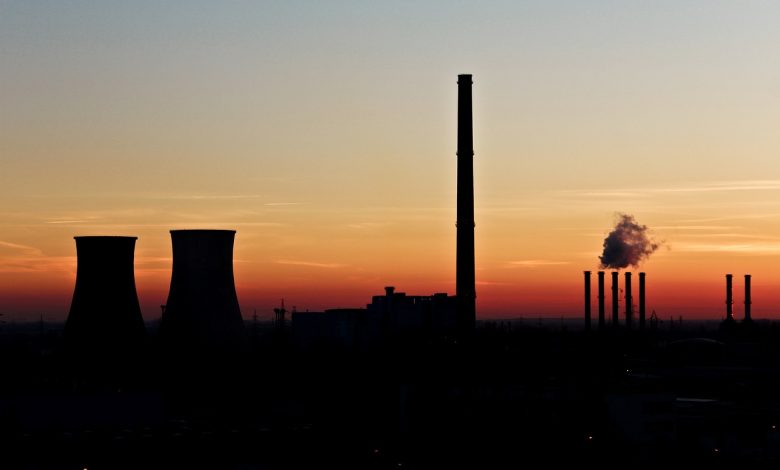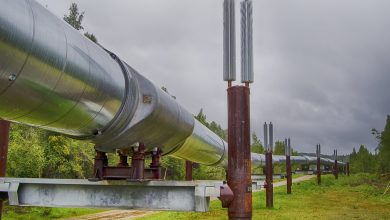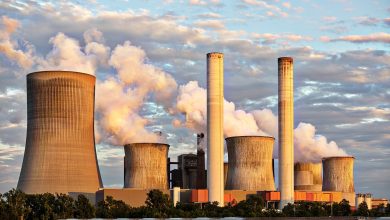What Does the Future Look Like for Natural Gas?

The Natural Gas Market
Over the past two decades, the natural gas market has been one of the fastest growing segments of the global energy industry. Driven primarily by decreasing costs, high conversion efficiency for energy generation, and low greenhouse gas emissions, natural gas has become a viable bridge to address the growing gap between renewable energy development and fossil fuel energy generation from oil and coal. As concerns about rising carbon emissions and climate change continue to dominate discussions for global policy makers, natural gas continues to be recognized as a clean and economically competitive fossil fuel amongst the growing portfolio of global energy resources. With many of today’s leaders in the energy industry discussing the possibility of a global transition away from fossil fuels, how might the future of the natural gas industry be impacted?

Fossil Fuel Usage
Despite the increasing indications that changes are starting to take place within the global energy industry, fossil fuels like coal, oil, and natural gas are still being used in greater quantities with each passing year. Even with the collapse of energy prices due to the impacts of the coronavirus, energy experts still predict that the fossil fuel industry will dominate the global energy portfolio in the coming decades. While there is no doubt that pressure will continue to mount on the development of new reserves of coal and oil, the future of the natural gas market is somewhat more challenging to predict. Developing nations like China and India are racing to address chronic levels of toxic air pollution by converting outdated coal-fired powerplants over to natural gas. Meanwhile, these countries are also attempting to move forward with renewable energy projects to reduce carbon emissions. Even though converting coal-fired power plants to natural gas would reduce carbon emissions over the long term, some policy makers and environmentalists are calling for efforts to rely more on renewables than natural gas.
Natural gas is frequently referred to as the cleanest and least environmentally damaging fossil fuel. One of the main reasons that natural gas is labeled as the cleanest is because of the fact that natural gas power plants typically emit less than 50 percent of the carbon dioxide that is emitted from traditional coal-fired power plants (Yglesias, 2019). Even though natural gas is much cleaner than coal when it comes to carbon emissions and other environmental pollutants, natural gas still contains some harmful compounds and contributes to rising greenhouse gas emissions. Methane is the single biggest chemical compound found in natural gas. While methane is a relatively non-toxic compound, it is known as a particularly potent greenhouse gas. According to research conducted by the nonprofit Environmental Defense Fund, methane is about 84 times as powerful of a greenhouse gas than carbon dioxide because of the way that it absorbs heat. Even with the fact that natural gas contains methane, it is important to note that methane only makes up a portion of natural gas emissions. Natural gas also contains hydrocarbon gas liquids, carbon dioxide, nonhydrocarbon gases, and water vapor.

Prehistoric Formation
Despite gaining in popularity only in recent years, natural gas has been around for millions of years. Similar to the creation of other fossil fuels, natural gas was formed from the remains of plants and animals over the course of hundreds of millions of years. Throughout a geologic timeframe, the remains of organic matter became compacted in dense layers of silt, sand, and calcium carbonate on ocean floors and various areas under earth’s surface. Over many generations, these organic deposits became even more compressed by thick layers of mud, rock, and silt. An immense amount of heat and pressure helped to transform these compounds into carbon and hydrogen-rich substances that later became natural gas. Today, these ancient deposits of natural gas are typically found between layers of overlapping rock formations. Other natural gas reserves can be found in layers of shale, sedimentary rock, and limestone. Natural gas that is found between layers of overlapping rock formations is known as conventional natural gas. Conversely, natural gas that is found in layers of shale and limestone is known as unconventional natural gas.
Natural Gas Extraction
When searching for natural gas deposits, teams of specialized geologists and petroleum engineers start by locating specific formations of rock and sediment that are likely to be conducive to natural gas formation. Seismic surveys are then used to penetrate regions on land and under water to determine the ideal locations to drill test wells. These instruments are used to send seismic waves below the surface to get more detailed information about specific types of rock formations. On land, geologists and petroleum engineers often use what is known as a thumper truck that sends vibrations below the ground deep into underlying rock formations. When analyzing formations that are deep below the surface of the ground, small explosives are sometimes used to create the seismic waves. A similar process is used when exploring for underwater deposits. Seismic waves are projected to the ocean floor to give the exploration team a better look at the geology below the surface. Underwater natural gas exploration has led to the discovery of many of the world’s largest reveres of natural gas.

Natural Gas Wealth
The explosive growth in the demand for cleaner fossil fuels has contributed to the immense accumulation of wealth in countries like the United Arab Emirates and Qatar. Both of these nations have profited tremendously from the discovery of large offshore reserves of natural gas. In Qatar for example, the natural gas industry has contributed to a nationwide average income of nearly $125,000, which is representative of nearly twice the average income in the United States (Walsh, 2018). In contrast with the countries of Iraq, Libya, Venezuela, and Nigeria, Qatar has yet to fall victim to what has become known as the natural resource curse (a paradox in which countries that have an abundance of natural resources have experienced low economic growth, less democracy, and disjointed development when compared to nations without abundant natural resource reserves). Political leaders in Qatar have continued to make wise investment decisions with the wealth that has been generated from the natural gas industry. Today, Qatar maintains among the highest per-capita GDP in the world at $98,800 (Jacobs, 2014).
A Convoluted History
The history of the global natural gas market has been remarkably different when compared to the history of the global coal and oil industry. The main differences can be seen in the way that the overall price and production of natural gas has progressed. In inflation-adjusted dollars, the price of natural gas began to rise in the mid-1970s through the early 1980s. However, natural gas prices have declined in every decade since then. When compared to the oil market, the price fluctuations since the 1970s have been extremely volatile, with prices dramatically rising and collapsing numerous times throughout the past few decades. When looking at natural gas production, the global peak was experienced in the mid-1970s, with production reaching nearly 80 percent of the peak high by the mid-1980s (MacAvoy, 2001). In the United States, the price and production of natural gas has been heavily influenced by federal regulatory policies.
Throughout the 1960s and the 1970s, federal government policies created limits on natural gas prices that resulted in nationwide shortages followed by a dramatic reversal that sent natural gas surpluses skyrocketing during the latter half of the 1970s. A 1954 Supreme Court decision implemented a requirement that federal regulations were to control the price of natural gas. However, this policy wasn’t able to be implemented until the late 1960s with a ruling from the Federal Power Commission. After the government was given the authority to reduce natural gas prices, consumption rose dramatically while production slumped. The government then dropped its ability to control prices to encourage more production to address a natural gas shortage. By the mid-1980s, new supplies of natural gas began to exceed demand. While federal policies were enacted to improve the performance of the natural gas industry, the implementation of these policies froze prices for a lengthy period of time.

Future Demand
The future demand for natural gas is expected to be influenced by energy regulations and the price of coal, oil, and alternative forms of energy. Total demand in the form of personal consumption and industrial production are the other variables that will impact the future of the natural gas industry. A burdensome series of regulations influenced a declining natural gas industry in the 1980s that persistently shrank into the early 1990s (MacAvoy, 2001). However, as the cost and concerns of coal production have continued to rise, the natural gas market has rapidly started to fill the gap in coal energy production. After many years of increasing demand, the demand for natural gas started to decline in early 2020, in tandem with the demand for other fossil fuels. Some natural gas projects that were recently thought of as lucrative opportunities have now been put on hold as a result of the global economic slowdown.
Industries that have been directly tied to the natural gas market have also been impacted from the slump in natural gas demand. For example, the development of large natural gas freighter ships has been a booming market in recent years. Transporting liquified natural gas via tanker ships has proven to be one of the most efficient methods to transport natural gas from Middle Eastern producers to growing markets in Southeast Asia. However, the coronavirus pandemic and abnormally warm global temperatures have stunted the demand for new tanker ships. Even Saudi Aramco, the world’s most profitable company, has had to recently abandon plans to order a dozen natural gas tankers, which made up a deal valued at roughly $2.5 billion (Paris, 2020). With the International Monetary Fund estimating that the global economy could shrink by three percent by the end of 2020, more pain could be in store for industries that are reliant on natural gas production.

Bouncing Back
In an effort to lock in a future characterized by increasing natural gas exports, the nation of Qatar has put a plan on hold to purchase 40 natural gas tankers. As China had been rapidly increasing its imports of natural gas in recent years, Qatar had hoped to profit off China’s demand for new fossil fuels. Qatar has been competing with U.S. producers to export natural gas to Southeast Asia. The U.S. recently edged out the Middle Eastern nation by becoming the world’s largest exporter of natural gas. Although, given that both the economies of both the U.S. and China are predicted to contract in 2020, questions remain about what future of natural gas exports.
Less than a decade ago, the U.S. was faced with an increasing challenge related to rising fossil fuel imports. However, the rise of both the oil and natural gas industries have transformed the U.S. into the world’s biggest exporter of fossil fuels. The growing global demand for natural gas, coupled with increasing production in the U.S., helped to revolutionize the American energy industry. While demand has slumped in 2020, energy analysts predict that the natural gas industry will bounce back in the coming years.
Sources
EIA. (2019). “Natural gas explained.” U.S. Energy information Administration.
Jacobs, H. (2014). “How Qatar got so rich so fast.” Business Insider.
Kolb, R. (2013). “The Natural Gas Revolution: At the Pivot of the World’s Energy Future.” Pearson Publishing.
MacAvoy, P. (2001). “The Natural Gas Market: Sixty Years of Regulation and Deregulation.” Yale University Press.
Mokhtab, S., et al. (2014). “Handbook of Lique?ed Natural Gas.” Gulf Professional Publications.
Paris, C. (2020). “Natural Gas Is Losing Its Shine for Ship Operators.” The Wall Street Journal.
Walsh, D. (2018). “Tiny, Wealthy Qatar Goes Its Own Way, and Pays for It.” New York Times.
Yglesias, M. (2019). “Air pollution is much more harmful than you know.” Vox.



